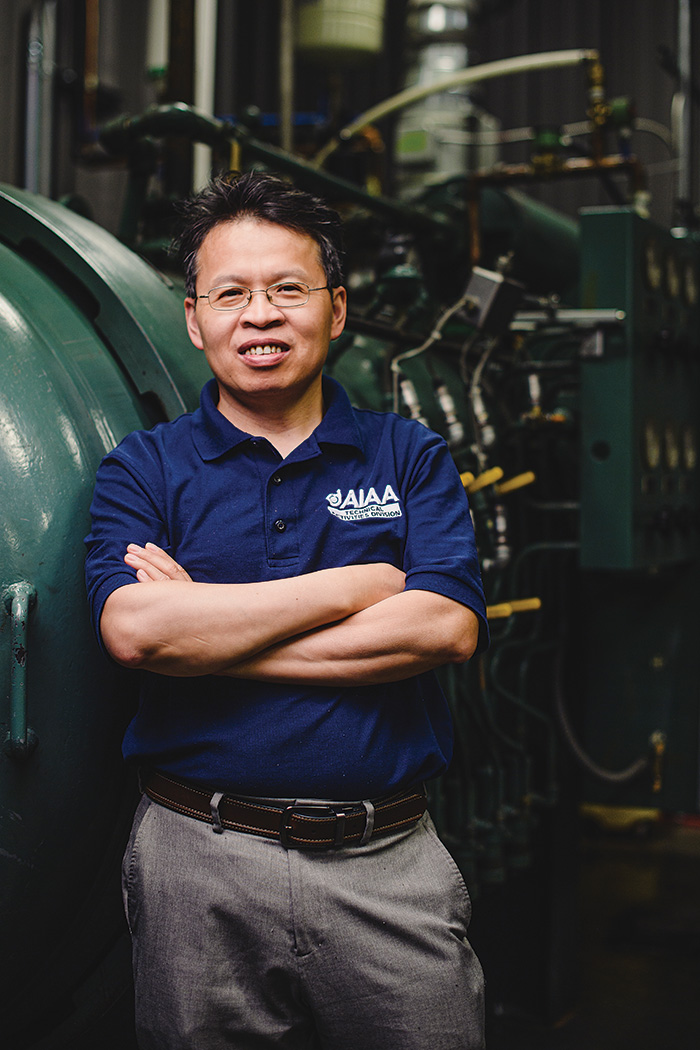
Flying cars have long been popularized as the transportation mode of the future. Thanks to technology licensed in part through Purdue University, the future of flying cars may be closer than we think.
"Before Henry Ford introduced the Model T, automobiles were a rarity that only the very wealthy could afford," said Wenbin Yu, AAE professor and director for the Composites Design and Manufacturing HUB (cdmHUB). "Prototypes for small-scale aerial vehicles already exist and they're capable of transporting people short distances. In the pursuit of making flying more agile through the commercialization of eVTOL, we will see a democratization of these flying cars. They will be affordable and accessible to the general public and will become as commonplace as cars."
Launched in May 2020, the United States Air Force's Agility Prime program is technology accelerator driving the commercial development of ORBs, electronic vertical take-off and landing aircraft (eVTOL). These vehicles hover on rotor blades and can be crewed, remotely piloted or autonomous. In addition to eVTOLs providing consumers a means of personal flight, they could also support the military in transportation, search and rescue, surveillance and possibly autonomous operations.
"The Air Force is ready to push this capability because there is a need for military vehicles that offer a balance of agility and speed," Yu said. "Helicopters used in the Army offer more agility than a fighter jet used in the Air Force but the fighter jet is much faster, yet the helicopter is quite loud. For operations where the Air Force might want a small crew that can be transported quickly and quietly, an eVTOL could offer the solution."
Yu is chief technology officer for AnalySwift, a leading provider of efficient, high-fidelity simulation software for the simulation of composite materials and structures. The company won a Small Business Technology Transfer grant from the USAF to develop an integrated computational blade engineering framework for the rapid insertion of high-performance composite rotor blades into personal-flight aircraft. The framework will lead to prototyped parts developed by project partner Hexcel and then tested by the Weber State University composites lab.

Wenbin Yu, AAE professor and director for the Composites Design and Manufacturing HUB
"Rotor blades made from composite materials are stronger and lighter than those made from traditional materials, while also offering optimal performance," Yu said. "But they can be very challenging to model. Our software enables the analysis of the rotor blade's engineering properties through computational optimization."
The VABS software created by AnalySwift drastically reduces the design cycle and time to market by saving orders of magnitude in design and analysis time. The development of VABS was continuously funded by the U.S. Army for more than three decades to address the challenges in modeling composite rotor blades in helicopters. In the years since, the accuracy of VABS in helicopters and the wind turbine industry has been extensively validated. Now, that same technology is being used to analyze the unique characteristics presented by composite rotor blades on ORBs.
"This technology saves time for companies developing eVTOL vehicles," Yu said. "The computational methodologies provide rigorous simulations of composite rotor blades in a less costly and time-consuming manner than competing methods and experiments. Currently, the development of these eVTOL vehicles is in the experimental phase. But in the near future, our software will enable the mass production of composite rotor blades for personal-flight aircraft."